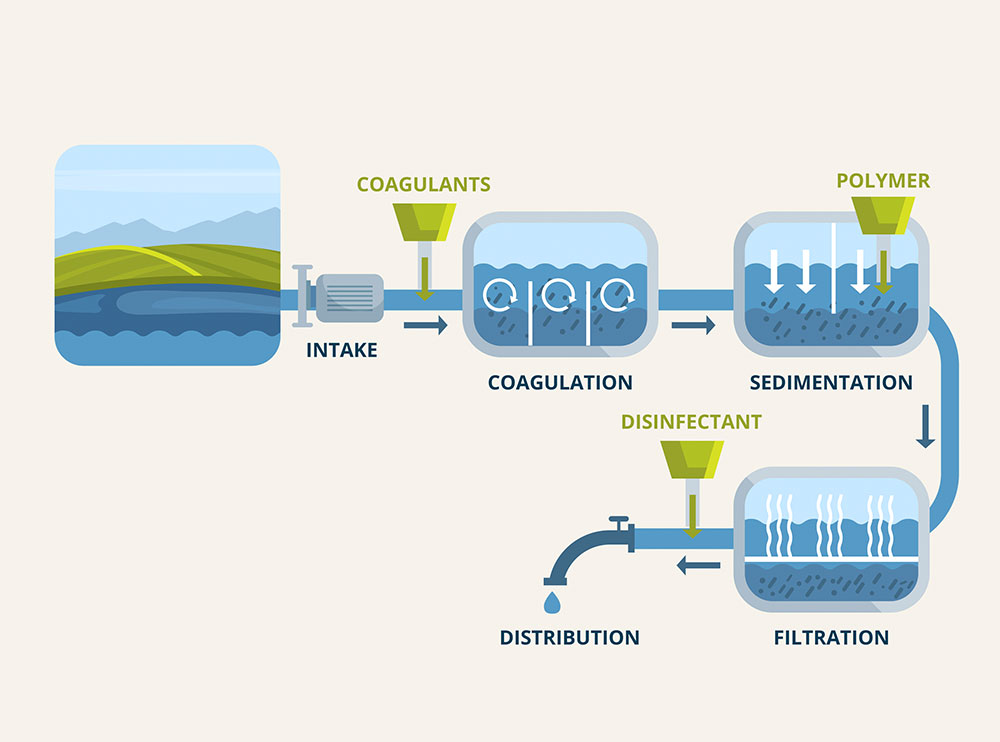
Technologies
Primary Treatment
FLUID SEP TECHNOLOGIES is company which is dedicated to deliver best, feasible and cost optimized solution in segment of water treatment and waste water treatment.
Fluid Sep Technologies offers both conventional and advanced clarification and sedimentation technologies, featuring quality equipment and dosing methods, ensuring effectiveness within a compact footprint. Let’s explore the five main primary clarification processes and their advantages.
Primary Clarifier
Primary clarifiers physically remove materials that float or readily settle out by gravity. They involve screening, comminution, grit removal, and sedimentation. Screens block floating debris, and comminutors grind and shred materials. Sedimentation or flotation processes remove the shredded material.
Advantages:
Cost-Effective: Simple and cost-effective process for removing large settleable and floatable solids.
Suitable for Various Industries: Widely used in wastewater treatment plants, food processing, and other industries for basic solid removal.
Easy Maintenance: The process is easy to operate and maintain, requiring minimal manual intervention.
HRSCC (High-Rate Solids Contact Clarifier)
In HRSCC, influent flow mixes with previously settled solids within the draft tube. Agglomerated solids settle more rapidly in the clarification area, achieving better clarity when enmeshed in a sludge blanket layer. Rotating sludge scrapers transport settled solids for removal, while clarified overflow leaves through a radial launder system.
Advantages:
High Efficiency: Provides efficient clarification and solids removal due to the agglomeration of floc particles in the reaction well.
Enhanced Clarity: The presence of a sludge blanket layer enhances the clarity of the treated effluent.
Space-Saving: Its compact design allows for smaller footprint requirements compared to conventional clarifiers.
Tube Settler
Tube settlers increase the settling capacity of circular clarifiers and sedimentation basins. They utilize multiple tubular channels sloped at an angle of 60° to form an increased settling area, reducing settling times and capturing fine floc that escapes the clarification zone.
Advantages:
Increased Capacity: Enhances the settling capacity of circular clarifiers and sedimentation basins, optimizing the process.
Reduced Settling Times: The inclined tubular channels reduce settling times and improve overall system performance.
Enhanced Effluent Quality: Effectively captures fine floc particles, resulting in improved effluent quality.
HMS Technology (Heavy Metal Sedimentation)
HMS Technology is an upgraded version of conventional clarifiers, designed for sedimentation and precipitation of heavy metal suspended loads. It features injection tanks, a maturation tank, and a settling zone, utilizing sludge recirculation for more efficient and rapid settling.
Advantages:
Heavy Metal Removal: Specially designed for the precipitation and removal of heavy metals from effluent streams.
Rapid Settling: Sludge recirculation enhances settling rates, making the process faster and more efficient.
High Treatment Efficiency: Achieves efficient removal of heavy metal suspended loads, meeting regulatory requirements.
BFC Technology (Ballasted Floc Clarifier)
BFC Technology employs coagulant aid and is divided into compartments, including a coagulation tank, injection tank, maturation tank, and settling tank. Sludge recirculation pump facilitates better sedimentation and clarification.
Advantages:
Coagulant Aid: Utilizes coagulant aid for improved settling and clarification performance.
Smaller Footprint: Requires minimal space due to its compact design, making it ideal for restricted areas.
Rapid Start-Up: Has a short start-up time, providing quick and reliable treatment results.
Fluid Sep’s Primary Clarification Systems offer a multitude of advantages, including high treatment efficiency, reduced footprint, and ease of operation. Our solutions cater to diverse industrial applications, delivering reliable and accessible water treatment for a cleaner and sustainable future. Partner with Fluid Sep Technologies to experience cutting-edge technology and unmatched expertise in water treatment solutions.
Newsletter
- © Copyright 2023, Fluid Sep Technologies

